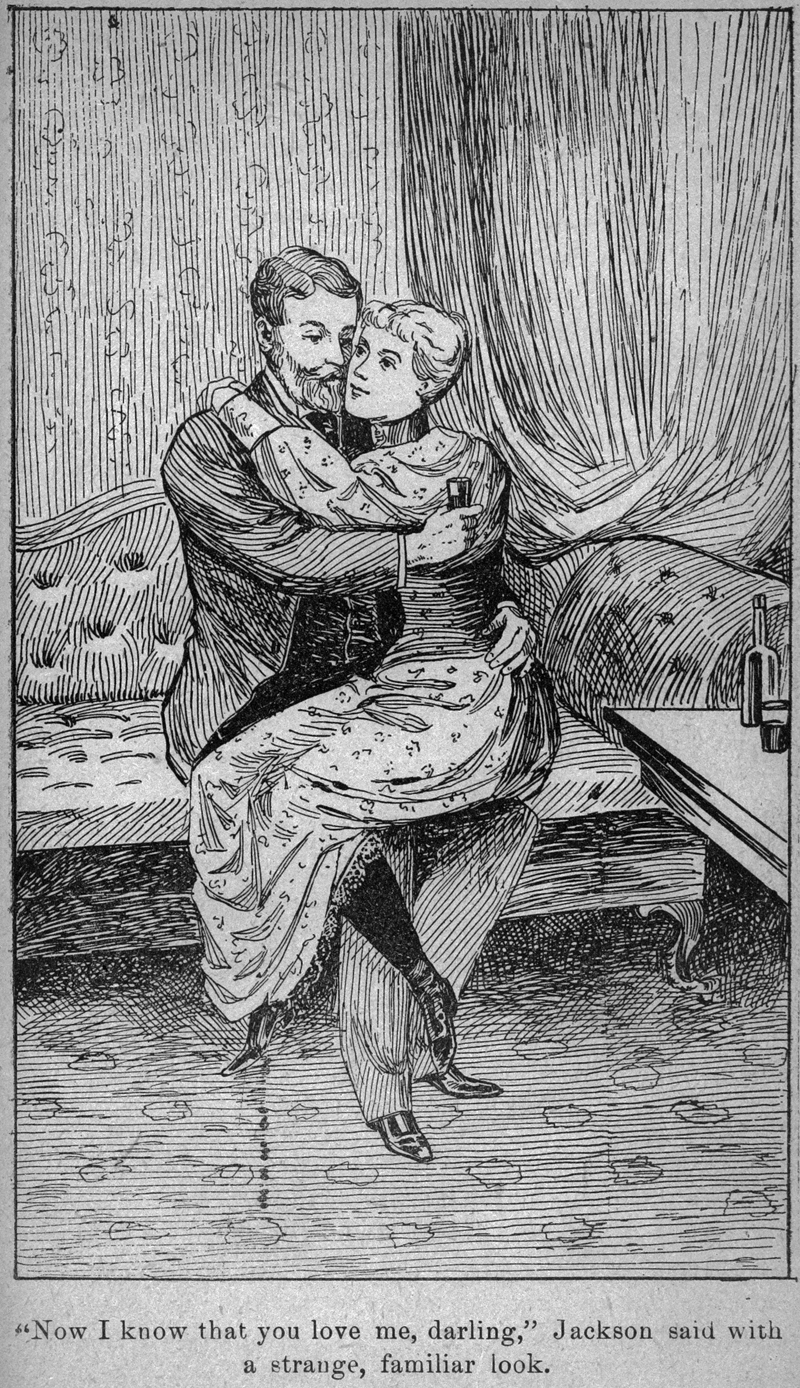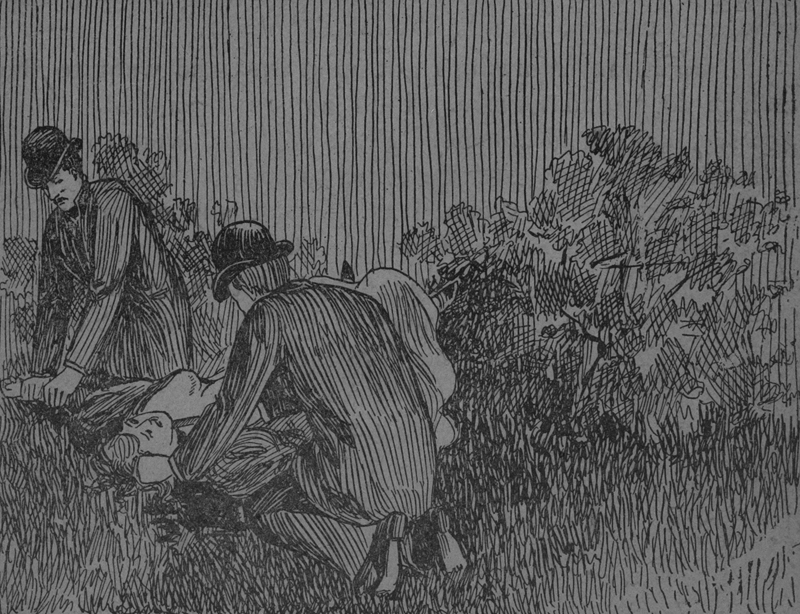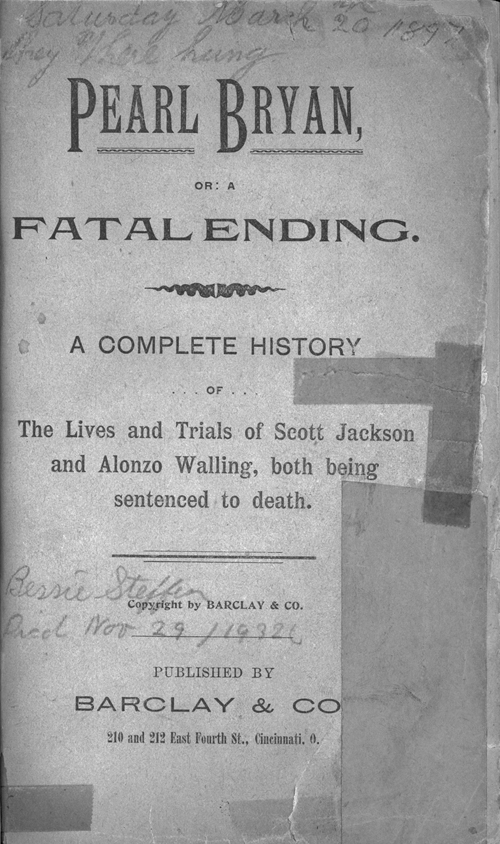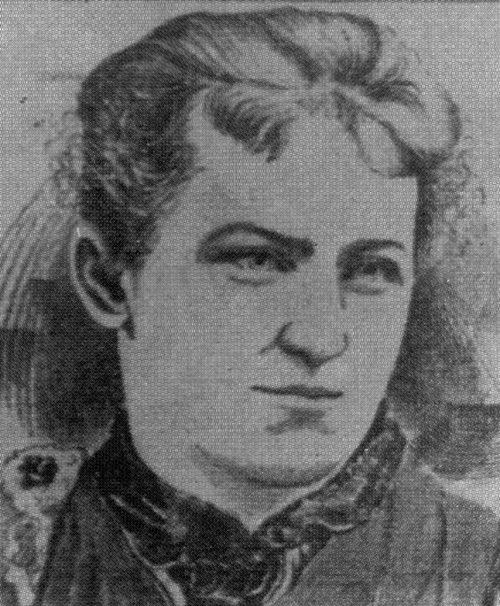 One hundred thirteen years ago, two UC dental students were executed by hanging. Yes, it’s true: the University of Cincinnati once had a dental school. It was the Ohio College of Dental Surgery and from 1888 to 1906, and then again from 1923 to its closing in 1926, the dental college was part of the university. Cincinnati had a distinct shortage of dentists in the early years of the 19th century – there were only two in 1830. The Ohio College of Dental Surgery was founded in 1845, and just a few short years after that, the Queen City boasted a directory of over forty dentists. The school attracted students from around the Midwest and was the first dental college to graduate a woman, one Lucy Hobbs of McGregor, Iowa. It was the custom of the college’s faculty in those days to send each student out into the world equipped with both a diploma and a Bible. There are, after all, many kinds of cavities to fill in day-to-day existence. The college’s later affiliation with the University of Cincinnati was a reflection of the number of medicine-oriented schools in 19th century Cincinnati that strived to combine classroom instruction with practical experience.
One hundred thirteen years ago, two UC dental students were executed by hanging. Yes, it’s true: the University of Cincinnati once had a dental school. It was the Ohio College of Dental Surgery and from 1888 to 1906, and then again from 1923 to its closing in 1926, the dental college was part of the university. Cincinnati had a distinct shortage of dentists in the early years of the 19th century – there were only two in 1830. The Ohio College of Dental Surgery was founded in 1845, and just a few short years after that, the Queen City boasted a directory of over forty dentists. The school attracted students from around the Midwest and was the first dental college to graduate a woman, one Lucy Hobbs of McGregor, Iowa. It was the custom of the college’s faculty in those days to send each student out into the world equipped with both a diploma and a Bible. There are, after all, many kinds of cavities to fill in day-to-day existence. The college’s later affiliation with the University of Cincinnati was a reflection of the number of medicine-oriented schools in 19th century Cincinnati that strived to combine classroom instruction with practical experience.
But regarding that hanging: in 1895 and 1896, Scott Jackson and Alonzo Walling were students in the College of Dental Surgery. Jackson’s girlfriend was Pearl Bryan, a young woman from Greencastle, Indiana who came to Cincinnati from time to time to visit him. More than a century later, the details of what happened when she arrived for the last time are still murky, but it seems that Bryan discovered she was pregnant and traveled to Cincinnati to tell Jackson and seek his help.  One sordid story circulated that Jackson and Walling conspired to arrange an illegal abortion and when matters went awry, they killed Bryan and beheaded her to cover up their deed. They then carried her body in a wagon across the river to Fort Thomas and dumped her in a farm pond. When the body was discovered, Pearl Bryan was identified by her clothing and shoes but her head was never found. A blood-soaked coat belonging to Jackson was recovered from a Cincinnati sewer.
One sordid story circulated that Jackson and Walling conspired to arrange an illegal abortion and when matters went awry, they killed Bryan and beheaded her to cover up their deed. They then carried her body in a wagon across the river to Fort Thomas and dumped her in a farm pond. When the body was discovered, Pearl Bryan was identified by her clothing and shoes but her head was never found. A blood-soaked coat belonging to Jackson was recovered from a Cincinnati sewer.
Scott Jackson and Alonzo Walling were arrested and charged with what newspapers called the “crime of the century.” Over the several months of their trial, both men were prodded, poked, and measured by phrenologists, and hypnotists were called in as well, all in an attempt to understand what would drive them to commit such an atrocity. The public’s attention was riveted on the case, documented as it was day by day by the newspapers. Throughout the trial, both Jackson and Walling blamed each other and maintained their own innocence, even as they were led to the gallows. On March 20, 1897, the pair was hanged in Newport.
newspapers. Throughout the trial, both Jackson and Walling blamed each other and maintained their own innocence, even as they were led to the gallows. On March 20, 1897, the pair was hanged in Newport.
The story of the Pearl Bryan murder case circulated throughout the country, engendering ballads and legends about a poor country girl done deadly by city slickers. One of the most famous went:
Poor Pearl! Poor girl
She thought she was going right
She had no dream of murder
On that dark, stormy night.
In 1973, American folklorist Anne Cohen gathered the Bryan stories and songs in writing her book on the case, and the genre of murdered women in folk tales and ballads, Poor Pearl, Poor Girl! The Murdered-Girl Stereotype in Ballad and Newspaper (Spec Col C.U. 901.c55po 1973). Then in 1996, Anthony W. Kuhnheim, a northern Kentucky  history student, did his own research into the Bryan legend, publishing The Pearl Bryan Murder Story (Spec Col C.U. 901.K85pe 1998). Cohen relied almost completely on the contemporary newspaper accounts while Kuhnheim used the clippings and materials in the Campbell County Historical Society.
history student, did his own research into the Bryan legend, publishing The Pearl Bryan Murder Story (Spec Col C.U. 901.K85pe 1998). Cohen relied almost completely on the contemporary newspaper accounts while Kuhnheim used the clippings and materials in the Campbell County Historical Society.
 However, an account published soon after the trial and execution tells the story and also provides a look at the lurid journalism and public taste in the 1890s. Pearl Bryan, or a Fatal Ending. A Complete History of the Lives and Trials of Scott Jackson and Alonzo Walling, both being sentenced to death (Spec Col RB HV 6783.P33 1896) is an outstanding example of true crime literature in the late 19th century. With purple prose accompanied by engravings of the murderers and victim, this book is valuable to students and scholars researching pulp writing and popular culture in American literature. The book also provides a look at how cities and their denizens were portrayed in non-fiction.
However, an account published soon after the trial and execution tells the story and also provides a look at the lurid journalism and public taste in the 1890s. Pearl Bryan, or a Fatal Ending. A Complete History of the Lives and Trials of Scott Jackson and Alonzo Walling, both being sentenced to death (Spec Col RB HV 6783.P33 1896) is an outstanding example of true crime literature in the late 19th century. With purple prose accompanied by engravings of the murderers and victim, this book is valuable to students and scholars researching pulp writing and popular culture in American literature. The book also provides a look at how cities and their denizens were portrayed in non-fiction.
All three of these books are in the holdings of the Archives & Rare Books Library. And yes, if the reader is interested, ARB also has some early material on the Ohio College of Dental Surgery as well.
– Kevin Grace

